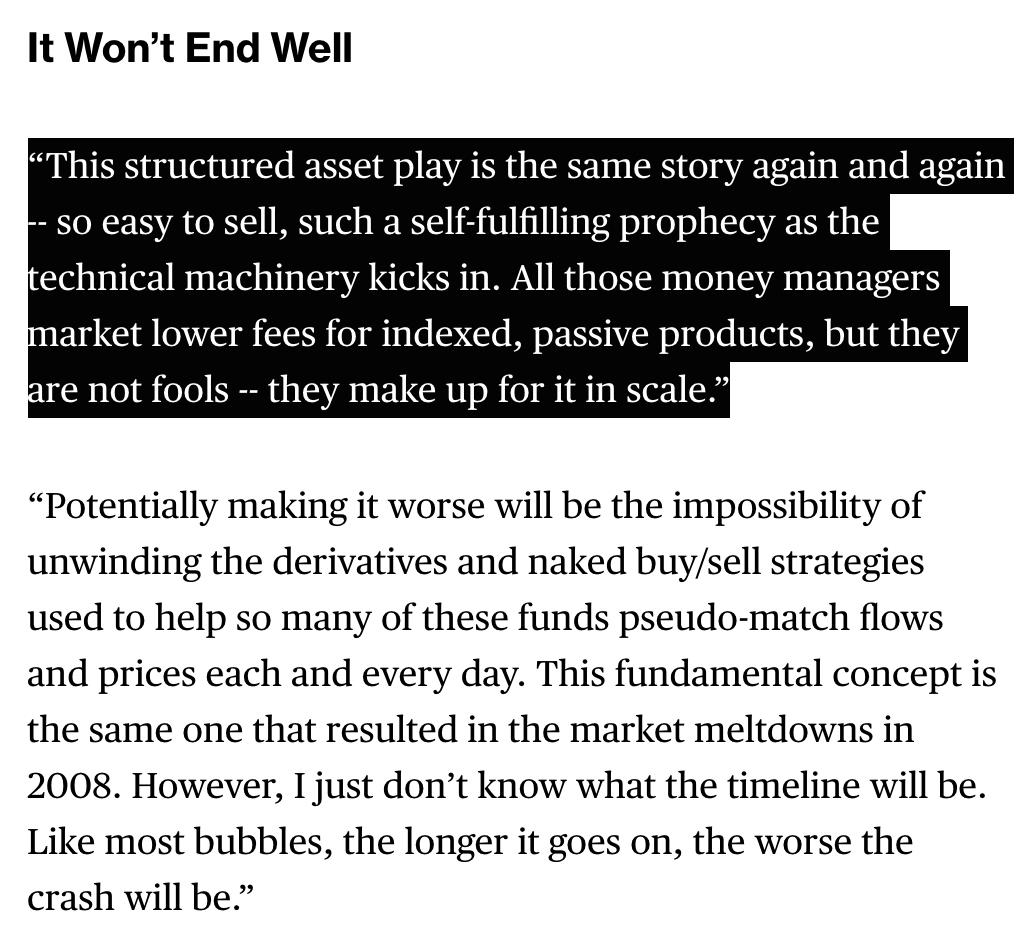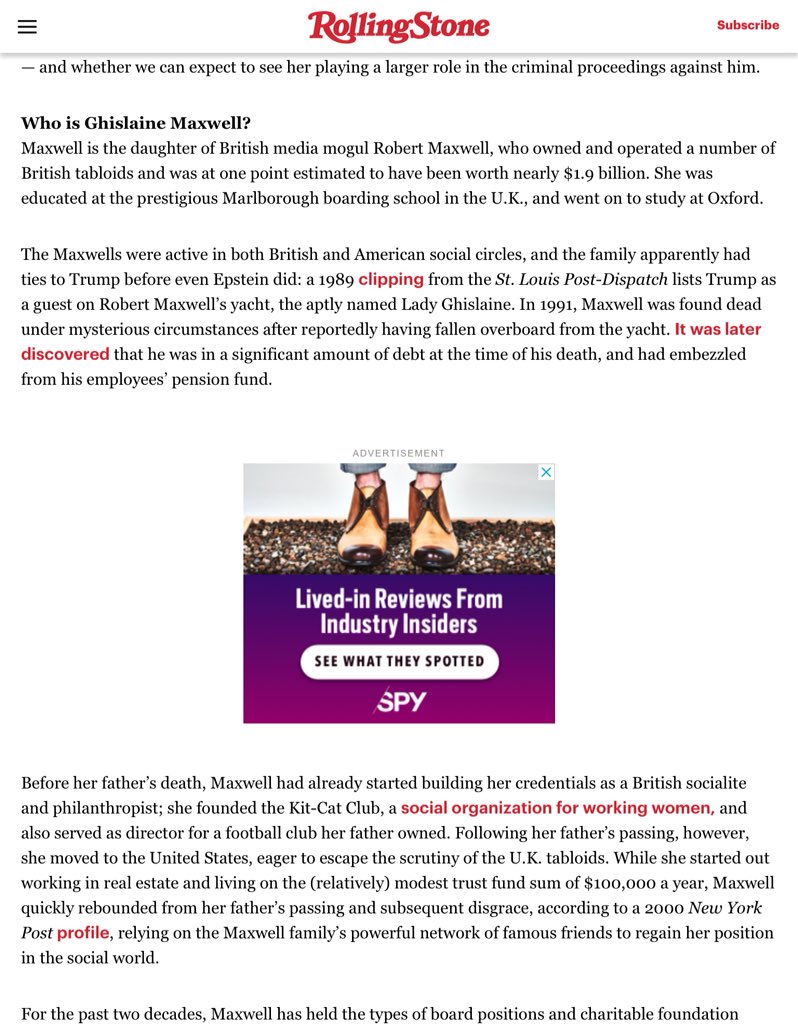bloomberg.com/news/articles/…
And broad-based stock bubbles and crashes are not new either.
Yes, markets go down. And every sale print needs a buyer.
So the argument is different.
Half the S&P trades less than US$150mm/day?
Sure. That half is worth 13% of S&P500 float mktcap.
So the other half trades more. On average $490mm/day. Take out the top 20 and the average of the remaining 230 of the top 250 is $350mm/day.
Only People Who Have To Unwind Have To Unwind.
Most of the large previous crashes were the result of excessive leverage forcing unwind. Of course, some is mechanical and some is behavioral. I could be "overinvested" in equities and that would make me 'levered'
The question therefore is...
Are passive investors "stretching" the market because they are saving too much because they have FOMO?
Have they pushed things more than previous bubbles with huge FOMO/momentum of CISs? (1929, 1936, 1946, 1965, 1968, Dec72, Sep87?
Also not clear.
How far would the components of the ETFs have to fall? (we know the smallcaps have good value because Burry owns them).
His mention of small cap Japan value traps is a sign. I don't disagree. There's great value there with a governance tailwind. But "passive is a bubble" as an excuse for smallcap value being undervalued? Not a good look.
A Small AUM High Active Share Go Anywhere Fund with a highly idiosyncratic mgr can do that.
A $20-30bn fund cannot. So $25trln of S&P mktcap can’t either.

















